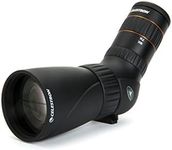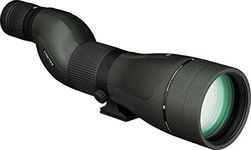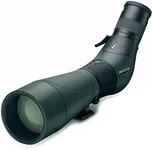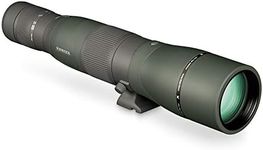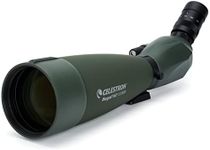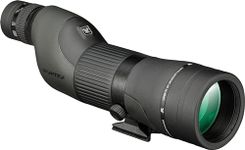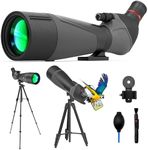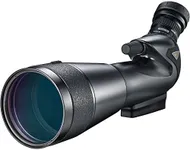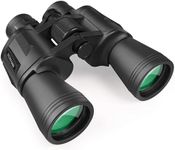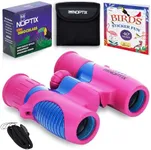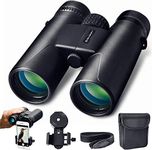Buying Guide for the Best Bird Spotting Scopes
Choosing the right bird-spotting scope can greatly enhance your bird-watching experience. The right scope will allow you to see birds in great detail, even from a distance. When selecting a bird-spotting scope, it's important to consider several key specifications that will affect the scope's performance and suitability for your needs. Understanding these specifications will help you make an informed decision and ensure you get the best scope for your bird-watching adventures.MagnificationMagnification refers to how much closer the scope can make the bird appear. This is usually represented by a number followed by an 'x', such as 20x or 60x. Higher magnification allows you to see more detail, but it can also make the image shakier and reduce the field of view. For general bird-watching, a magnification range of 20x to 40x is often sufficient. If you need to see birds at very long distances, you might opt for higher magnification, but be prepared to use a tripod for stability.
Objective Lens DiameterThe objective lens diameter is the size of the front lens of the scope, measured in millimeters. A larger objective lens allows more light to enter the scope, which can result in a brighter and clearer image, especially in low-light conditions. Common sizes range from 50mm to 80mm. If you often bird-watch in dim light or want the best possible image quality, go for a larger objective lens. However, larger lenses also make the scope heavier and bulkier, so consider how much weight you're willing to carry.
Field of ViewField of view (FOV) is the width of the area you can see through the scope at a certain distance, usually measured in feet at 1,000 yards. A wider field of view makes it easier to locate and follow birds, especially those that move quickly. Scopes with lower magnification typically offer a wider field of view. If you prioritize ease of tracking birds, choose a scope with a wider FOV. However, if you need to see fine details, you might opt for a narrower FOV with higher magnification.
Eye ReliefEye relief is the distance from the eyepiece to your eye where you can still see the full field of view. This is particularly important for people who wear glasses. Longer eye relief (15mm or more) is more comfortable and allows you to see the entire image without straining. If you wear glasses, look for scopes with longer eye relief to ensure a comfortable viewing experience. If you don't wear glasses, eye relief may be less critical, but it's still a factor in overall comfort.
Lens CoatingsLens coatings are applied to the glass surfaces to reduce glare and improve light transmission, resulting in clearer and brighter images. Coatings can range from single-layer to multi-layer (fully multi-coated) applications. Fully multi-coated lenses provide the best image quality by maximizing light transmission and reducing reflections. If you want the clearest and brightest images, opt for scopes with fully multi-coated lenses. For casual bird-watching, single or multi-coated lenses may suffice.
Waterproof and FogproofWaterproof and fogproof features protect the scope from moisture and internal fogging, which can be crucial in various weather conditions. These scopes are typically sealed with O-rings and filled with nitrogen or argon gas. If you plan to bird-watch in different environments and weather conditions, choosing a waterproof and fogproof scope will ensure durability and consistent performance. If you only bird-watch in fair weather, this feature might be less critical.
Weight and PortabilityWeight and portability are important considerations, especially if you plan to carry the scope for long periods or over long distances. Heavier scopes can be more stable and offer better image quality, but they can also be cumbersome. Lighter scopes are easier to carry but may compromise on some features. Consider how you will use the scope and balance the need for portability with the desired performance. If you hike a lot, a lighter scope might be more practical.
